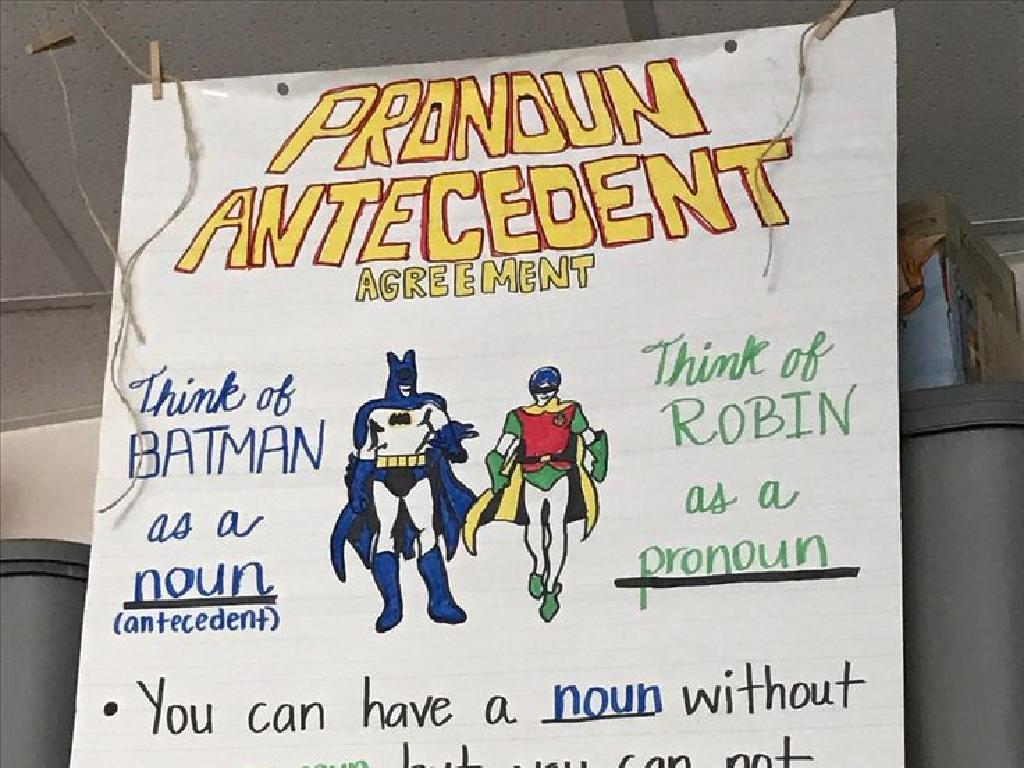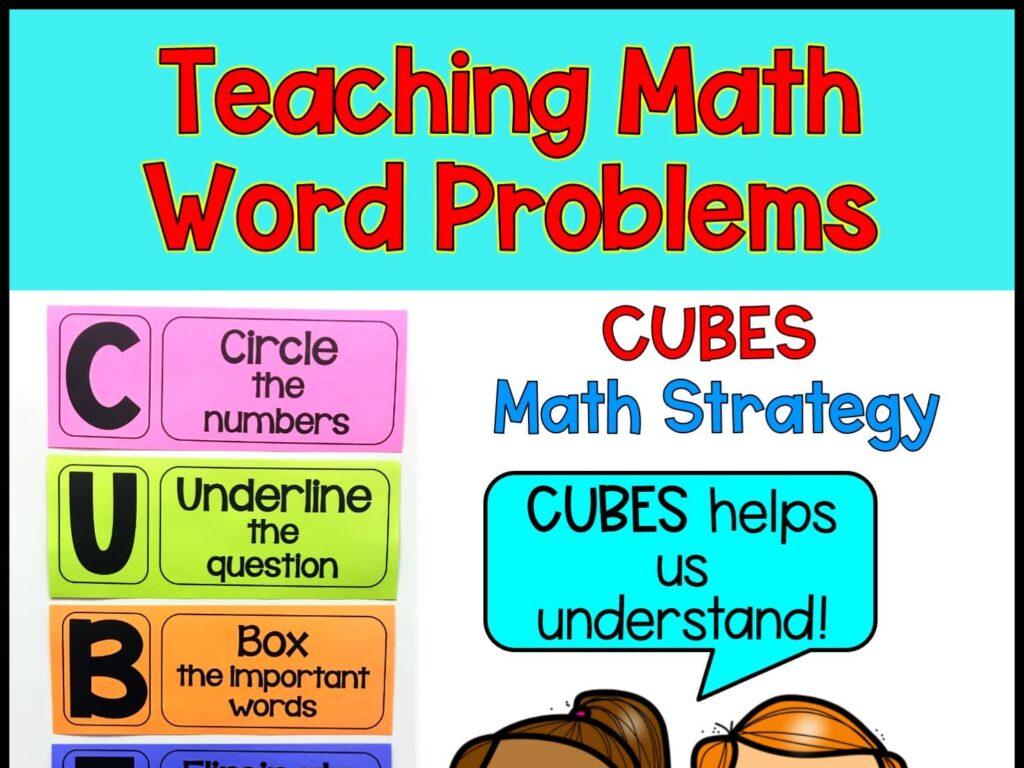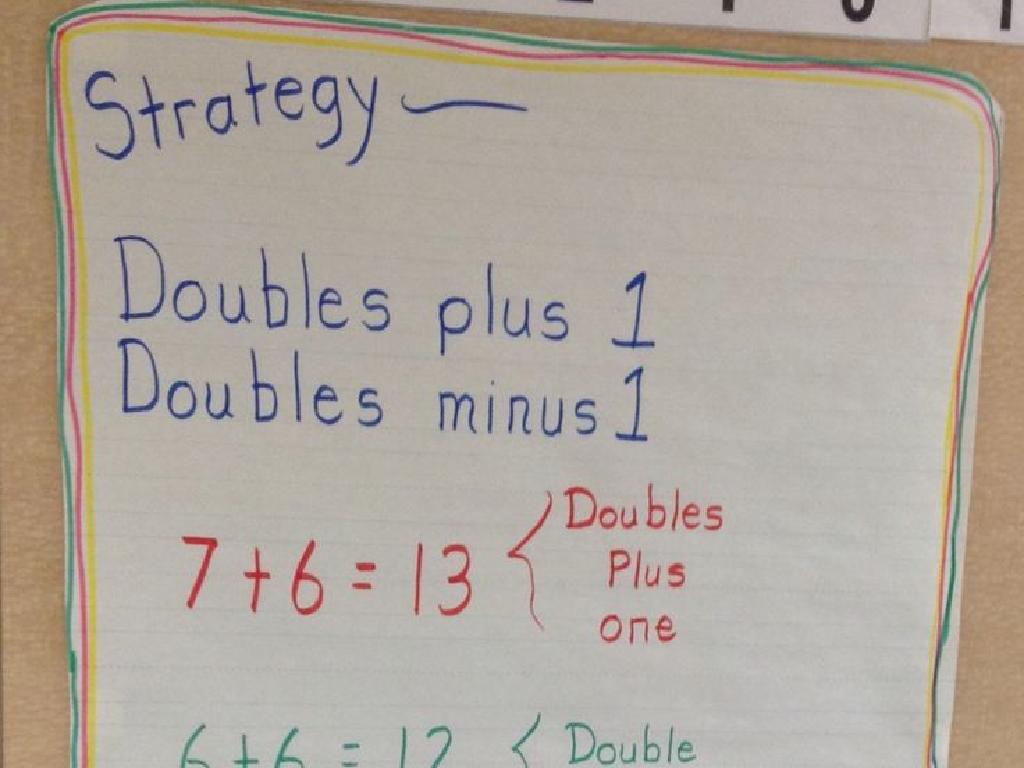Subtract Mixed Numbers With Like Denominators
Subject: Math
Grade: Fourth grade
Topic: Add And Subtract Fractions With Like Denominators
Please LOG IN to download the presentation. Access is available to registered users only.
View More Content
Subtracting Mixed Numbers with Like Denominators
– Recap: What are fractions?
– Fractions represent parts of a whole
– Explore mixed numbers
– Mixed numbers have a whole part and a fraction part
– Steps to subtract mixed numbers
– 1. Keep the denominator same 2. Subtract the whole numbers 3. Subtract the fractions
– Example: Subtracting mixed numbers
– 3 1/4 – 2 3/4 = (3-2) + (1/4-3/4) = 1 – 1/2
|
Begin with a brief review of fractions to ensure students recall that fractions represent parts of a whole. Introduce mixed numbers as numbers made up of a whole number and a fraction. Explain the steps to subtract mixed numbers with like denominators: keeping the denominator the same, subtracting the whole numbers, and then subtracting the fraction parts. Provide an example on the board, such as 3 1/4 – 2 3/4, and solve it step by step. Emphasize that the denominators do not change when subtracting fractions with like denominators. Encourage students to practice with similar problems and prepare a few more examples to work through as a class.
Understanding Like Denominators
– ‘Like Denominators’ explained
– Denominators are the same in like fractions, e.g., 1/4 and 3/4
– Examples: Like vs Unlike
– Like: 2/5 and 4/5, Unlike: 2/5 and 3/6
– Why like denominators help
– With same denominators, we only subtract numerators
– Simplifying subtraction
– Subtracting is faster when denominators match
|
This slide introduces the concept of like denominators, which is crucial for understanding how to subtract mixed numbers. Begin by defining ‘like denominators’ as fractions that have the same bottom number. Show visual examples of like and unlike denominators to help students recognize them. Explain that having the same denominators simplifies the process of subtraction because we only need to subtract the top numbers (numerators). This foundational knowledge sets the stage for students to practice subtracting mixed numbers with like denominators, making the process more intuitive and less intimidating.
Subtracting Whole Numbers
– Review subtraction of whole numbers
– Recall: To subtract, write numbers in columns and subtract each digit.
– Engage in a class subtraction activity
– Let’s solve a problem together on the board.
– Understand starting with whole numbers
– It’s easier to grasp mixed number subtraction by mastering whole numbers first.
|
This slide is aimed at refreshing students’ memory on how to subtract whole numbers as a foundation for subtracting mixed numbers. Start by reviewing the column method for subtraction, ensuring that students remember to line up the digits correctly and borrow if necessary. Then, involve the class in an interactive problem-solving activity on the board to promote participation. Emphasize the importance of understanding whole number subtraction before moving on to mixed numbers, as it simplifies the process and builds confidence. For the activity, consider problems of varying difficulty and encourage students to explain their reasoning. Possible activities could include peer teaching, timed drills, or subtraction games.
Subtracting Fractions with Like Denominators
– Steps to subtract fractions
– Subtract numerators and keep the denominator.
– Keep the denominator same
– The bottom number stays the same.
– Example: 2/4 – 3/4
– Start with 2/4, take away 3/4, what’s left?
– Simplify the result
– If the answer is negative or improper, make it a mixed number.
|
This slide is aimed at teaching fourth graders how to subtract fractions with the same bottom number (denominator). Begin by explaining that when subtracting fractions, the denominator remains unchanged, and only the top numbers (numerators) are subtracted from one another. Use the example of subtracting 3/4 from 2/4 to illustrate this concept. Emphasize that if they end up with a negative number or an improper fraction, they should convert it to a mixed number. Encourage students to practice with additional examples and ensure they understand how to simplify their answers.
Subtracting Mixed Numbers: Step-by-Step
– Separate whole numbers and fractions
– Example: For 3 2/5 – 1 4/5, separate as (3 – 1) and (2/5 – 4/5)
– Subtract the whole numbers
– From our example: 3 – 1 equals 2
– Subtract the fractions
– Subtract fractions: 2/5 – 4/5 equals -2/5. We’ll need to borrow from the whole number
– Combine results for the final answer
– Final answer: 2 (whole number) – 2/5 (fraction) equals 1 3/5
|
When teaching students to subtract mixed numbers with like denominators, start by explaining the importance of separating the whole number and fraction parts of each mixed number. Demonstrate subtraction of whole numbers first, followed by the fractions. Emphasize borrowing from the whole number if the fraction part of the minuend is smaller than the subtrahend. After subtracting, show students how to combine the results to get the final answer. Use visual aids like number lines or pie charts to help them understand the concept better. Practice with several examples and ensure they understand each step before moving on.
Let’s Practice Together: Subtracting Mixed Numbers
– Subtract whole numbers first: 5 – 3
– Subtract fractions with same denominator: 2/3 – 1/3
– Example 1 solution: 2 1/3
– After subtracting, 5 2/3 – 3 1/3 equals 2 1/3
– Example 2 solution: 5
– 7 5/8 – 2 5/8 equals 5 because the fractional parts are the same
|
This slide is an interactive class activity where students will work through two examples of subtracting mixed numbers with like denominators. Start by demonstrating how to subtract the whole number parts and then the fractional parts. For Example 1, show that 5 minus 3 equals 2, and then 2/3 minus 1/3 equals 1/3, combining them to get the final answer of 2 1/3. For Example 2, illustrate that 7 minus 2 equals 5, and since the fractional parts are the same, they cancel each other out, leaving just the whole number 5. Encourage students to solve the problems on their own first, then work through them as a class, discussing each step. Provide additional similar problems for practice and ensure to clarify any doubts.
Common Mistakes in Subtracting Mixed Numbers
– Don’t forget to subtract whole numbers
– Subtract the whole numbers before dealing with fractions
– Keep denominators the same
– Like denominators are crucial for correct subtraction
– Always simplify your answer
– Reduce fractions to simplest form to complete the problem
|
When teaching students to subtract mixed numbers with like denominators, it’s important to highlight common errors. Remind them to subtract whole numbers separately from the fractional parts. Emphasize the importance of not changing denominators; they should remain the same throughout the problem. After finding the answer, guide them to simplify the fraction to its lowest terms. This could involve dividing by the greatest common factor or converting an improper fraction back into a mixed number. Provide practice problems that specifically address these common mistakes to reinforce the correct methods.
Class Activity: Fraction Subtraction Race
– Split into teams for a math challenge
– Solve subtraction problems on the board
– First team to finish wins a point
Speed and accuracy are key to winning the point!
– Team with most points gets a reward
A fun incentive to motivate participation and teamwork.
|
This activity is designed to encourage teamwork and reinforce the concept of subtracting mixed numbers with like denominators. Divide the class into small groups and have each team solve a set of subtraction problems on the board. The first team to correctly complete their set wins a point for that round. Continue with multiple rounds to keep the students engaged. The team with the most points at the end of the activity receives a small reward. Possible rewards could be extra recess time, a homework pass, or a classroom privilege. This activity not only makes learning fun but also helps students to practice their subtraction skills in a competitive and interactive setting.
Homework and Next Steps
– Complete the subtraction worksheet
– Practice subtracting mixed numbers with like denominators
– Next lesson: Adding mixed numbers
– We’ll learn to add mixed numbers with like denominators
– Review today’s lesson
– Go over your notes and try extra problems
– Feel free to ask questions
– Any doubts? Now’s the time to ask!
|
For homework, students are expected to complete a worksheet that focuses on subtracting mixed numbers with like denominators to reinforce today’s lesson. Encourage them to practice and review the steps we’ve learned. The next class will cover adding mixed numbers, building on their understanding of subtraction. Remind students to review their notes from today’s lesson and practice additional problems for better retention. Finally, create an open and supportive environment for students to ask any lingering questions they might have before concluding the lesson. Provide guidance on how to approach challenging problems and encourage collaborative problem-solving among peers.






